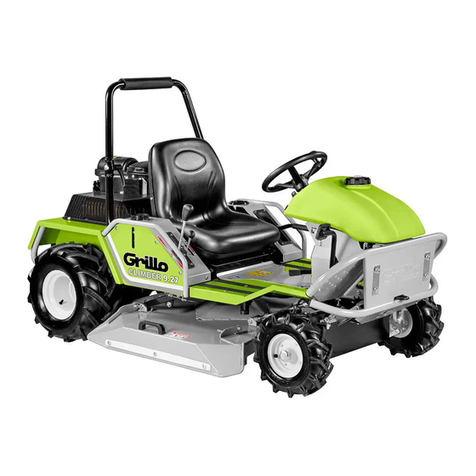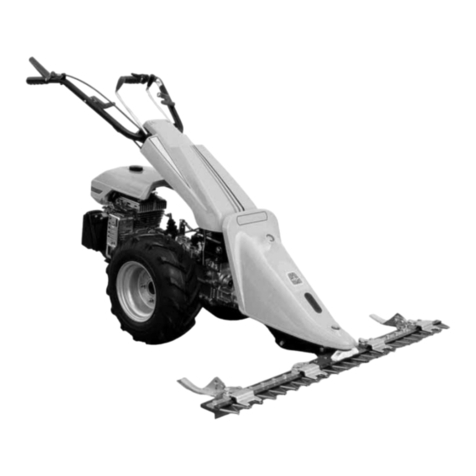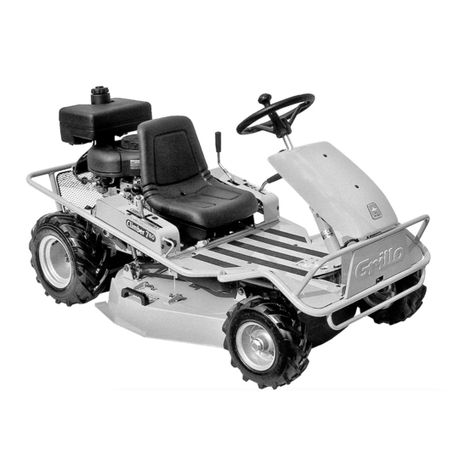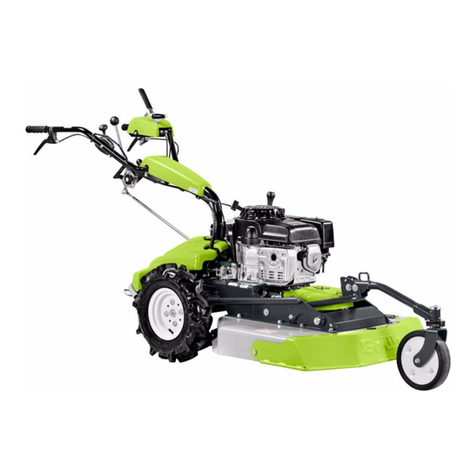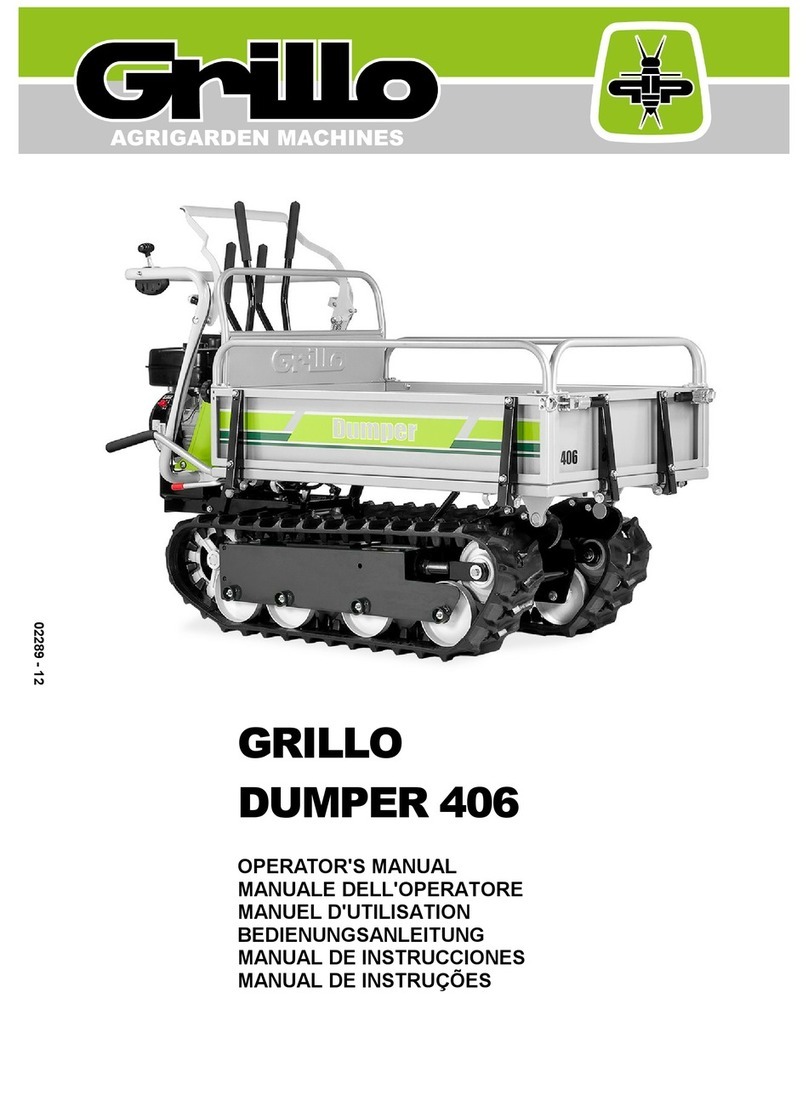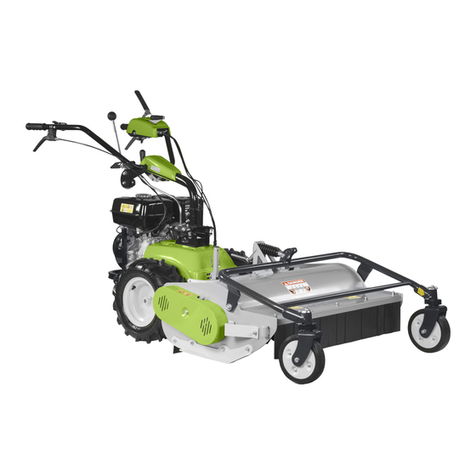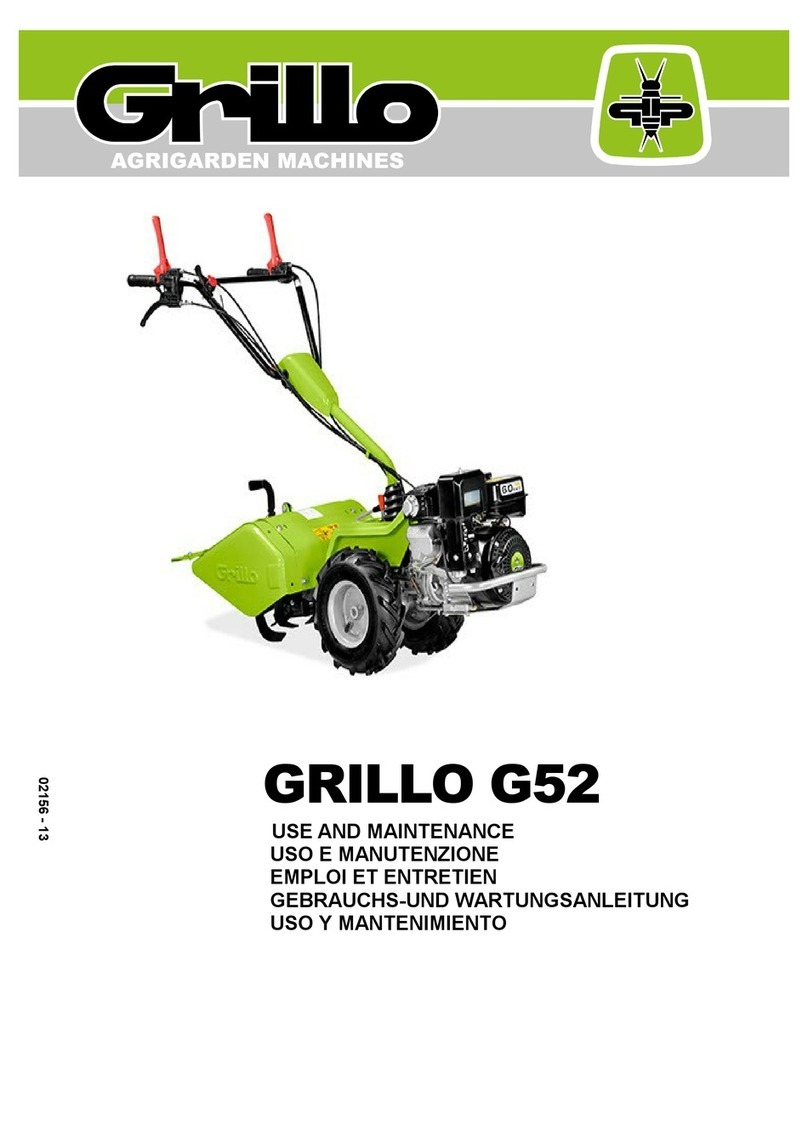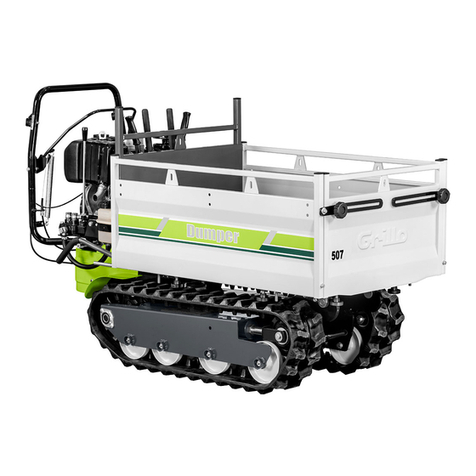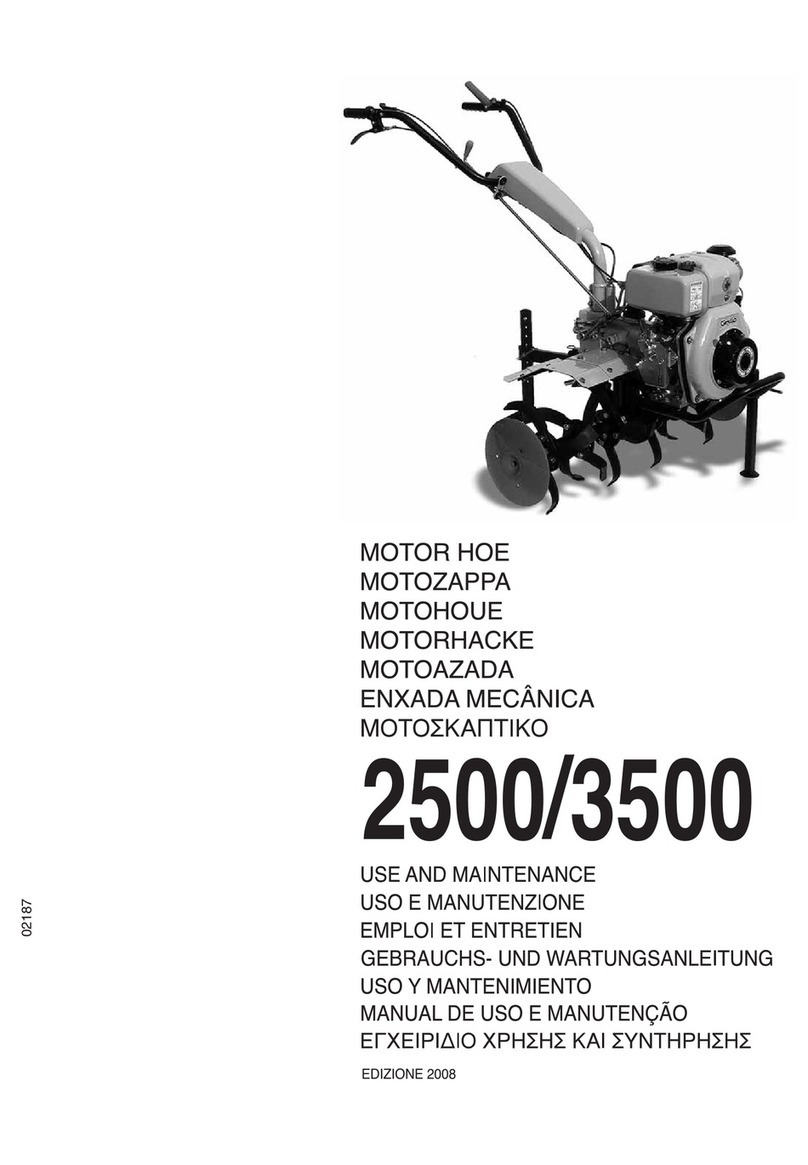GB
Safety rules ...................................................................................................................................................... p. 1
Rotovator.......................................................................................................................................................... p. 6
Identification and after-sales service................................................................................................................ p. 6
Technical data .................................................................................................................................................. p. 7
Instructions for use........................................................................................................................................... p. 7
Putting the machine into service ...................................................................................................................... p. 7
Maintenance and lubrication ............................................................................................................................ p. 8
Implements....................................................................................................................................................... p. 8
Description of the controls................................................................................................................................ p. 31
Noise level – vibration level.............................................................................................................................. p. 36
I
Norme antinfortunistiche .................................................................................................................................. p. 1
Motocoltivatore................................................................................................................................................. p. 11
Identificazione e assistenza ............................................................................................................................. p. 11
Caratteristiche tecniche.................................................................................................................................... p. 12
Istruzioni d’uso ................................................................................................................................................. p. 12
Messa in opera della macchina........................................................................................................................ p. 12
Manutenzione e lubrificazione.......................................................................................................................... p. 13
Attrezzi ............................................................................................................................................................. p. 14
Descrizione dei comandi .................................................................................................................................. p. 31
Rumorosità – vibrazioni.................................................................................................................................... p. 36
F
Règles de sécurité générale ............................................................................................................................ p. 1
Motoculteur ...................................................................................................................................................... p. 16
Identification et assistance............................................................................................................................... p. 16
Caractéristiques techniques............................................................................................................................. p. 17
Mode d’emploi.................................................................................................................................................. p. 17
Mise en service de la machine......................................................................................................................... p. 17
Entretien et lubrification.................................................................................................................................... p. 18
Accéssoires...................................................................................................................................................... p. 18
Description des commandes............................................................................................................................ p. 31
Bruit – vibrations .............................................................................................................................................. p. 36
D
Sicherheitsvorschriften..................................................................................................................................... p. 1
Einachsschlepper............................................................................................................................................. p. 21
Identifikation und Kundendienst....................................................................................................................... p. 21
Technische Daten............................................................................................................................................. p. 22
Bedienungsanleitung........................................................................................................................................ p. 22
Inbetriebnahme der Maschine.......................................................................................................................... p. 22
Wartung und Schmierung................................................................................................................................. p. 23
Anbaugeräte..................................................................................................................................................... p. 23
Beschreibung der Bedienungseinrichtungen ................................................................................................... p. 31
Geräuschemission – Vibrationen ..................................................................................................................... p. 36
E
Normas de seguridad....................................................................................................................................... p. 1
Motocultor ........................................................................................................................................................ p. 26
Identificación y asistencia ................................................................................................................................ p. 26
Características técnicas ................................................................................................................................... p. 27
Instrucciones de uso ........................................................................................................................................ p. 27
Puesta en marcha de la máquina .................................................................................................................... p. 27
Manutencion y lubricación................................................................................................................................ p. 28
Accesorios........................................................................................................................................................ p. 28
Descripción mandos......................................................................................................................................... p. 31
Niveles del ruido - vibración ............................................................................................................................. p. 36
